The Spring Temple Buddha, located at Foquan Temple in Zhaocun Township, Pingdingshan City, Henan, is a monumental masterpiece and a symbol of spiritual and architectural grandeur. Initially built at a height of 128 meters (420 feet), it stands atop a 25-meter (82-foot) pedestal, bringing its total height to 153 meters (502 feet).
Following additional modifications in October 2008, the hill on which the statue rests was reshaped into two more pedestals, with the upper pedestal measuring 15 meters tall. These adjustments have elevated the total height of the monument to an astounding 208 meters (682 feet), solidifying its place as one of the tallest statues in the world.
The History of the Spring Temple Buddha
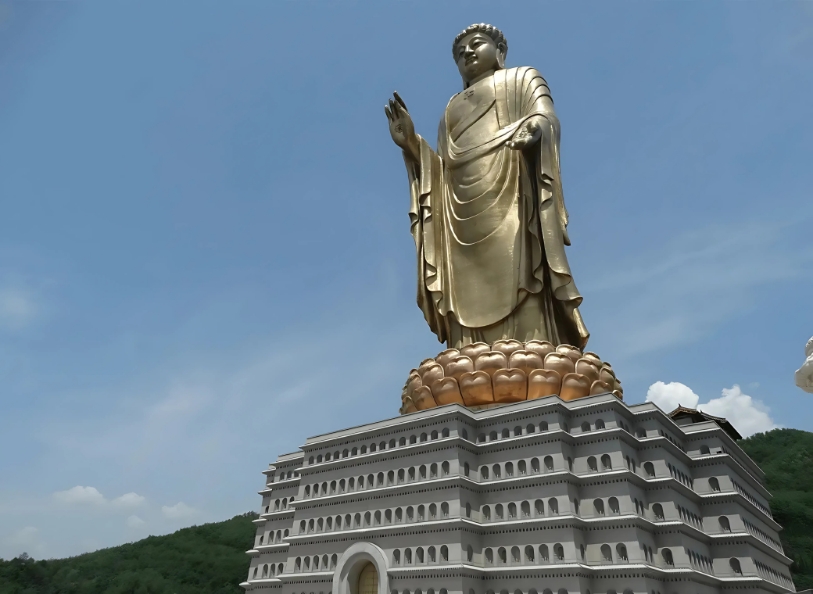
The construction of the Spring Temple Buddha was announced shortly after the tragic destruction of the 1,500-year-old Buddha statues at the Bamiyan heritage site in Afghanistan in 2001. These ancient statues, built in the 6th century, were remarkable works of art, standing 125 feet (38 meters) and 180 feet (55 meters) tall, representing the Eastern and Western Buddhas, respectively.
The Western Buddha, also known as the Great Buddha, was once the tallest standing Buddha statue in the world. Unfortunately, these iconic monuments were severely damaged during the Soviet-Afghan conflict in 1979 but were later restored before their eventual destruction.
Work on the Spring Temple Buddha began in 1997, taking 12 years to complete. The statue was officially finished in 2008, surpassing Japan’s 330-foot-tall (100-meter) Ushiku Daibutsu, which had been completed in 1993. Before the Spring Temple Buddha, China’s tallest monument was the Grand Buddha in Ling Shan, standing 289 feet (88 meters) tall.
The Dimensions and Scale of the Statue
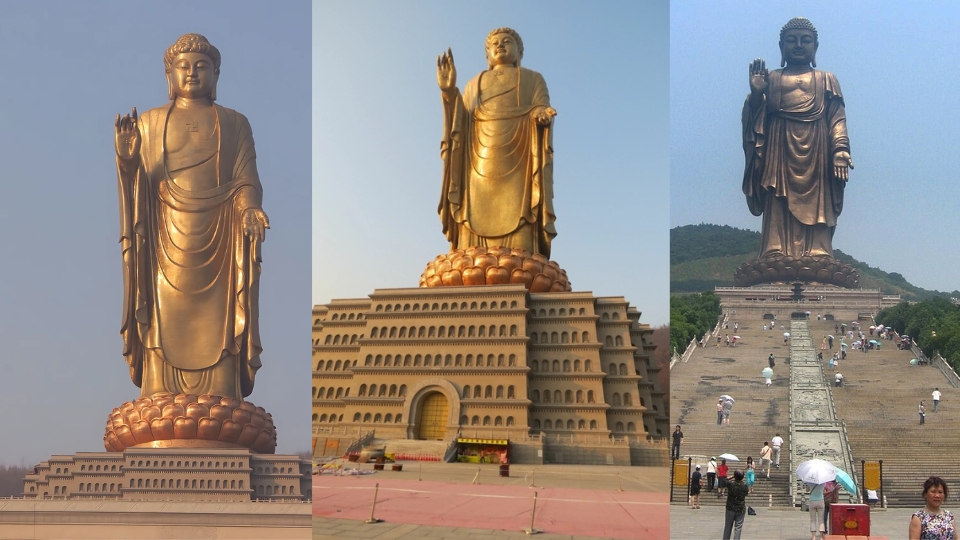
The Spring Temple Buddha is the second tallest statue in the world, standing at an impressive height of 682 feet (208 meters).
Following are the dimensions and scale of the statue.
| Feature | Measurement |
|---|---|
| Total Height | 682 feet (208 meters) |
| Body Length of Buddha | 354 feet (108 meters) |
| Lotus Pedestal Height | 66 feet (20 meters) |
| Diamond Seat Height | 82 feet (25 meters) |
| Sumeru Seat Height | 180 feet (55 meters) |
| Eye Height | 6.2 feet (1.9 meters) |
| Eye Width | 12.9 feet (3.9 meters) |
| Hand Height | 62.3 feet (19 meters) |
| Hand Width | 29.5 feet (9 meters) |
| Hand Thickness | 16.4 feet (5 meters) |
| Diamond Seat Area | 8.2 acres (3.3 hectares) |
| Sumeru Seat Area | 13.2 acres (5.3 hectares) |
Foquan Temple and the Bell of Good Luck
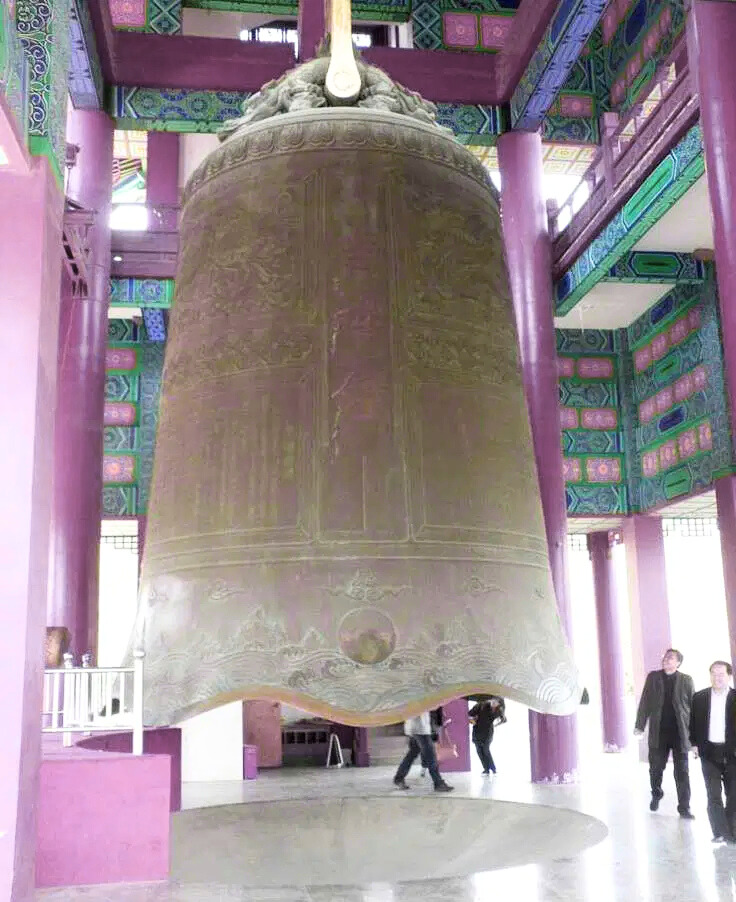
The Foquan Temple, located near the Spring Temple Buddha, is a historic site built during the Tang Dynasty. Inside the temple stands the incredible Bell of Good Luck, a massive bronze bell installed in 2000. This bell holds the title of the largest working bell in the world, measuring over 8 meters (26 feet) in height and 5.1 meters (16.7 feet) in diameter. It is also the heaviest, weighing an astonishing 115,757 kilograms (255,600 pounds).
The bell’s design complements the Buddhist theme of the temple and statue, with its surface beautifully adorned by 36 lotus petal patterns. Its first ring marked the arrival of the new millennium at midnight on December 31, 2000, symbolizing hope and renewal for the 21st century. Today, it draws countless visitors who come to marvel at its engineering and even try ringing it themselves—a truly unique and spiritual experience.
The Symbolism and Artistic Design
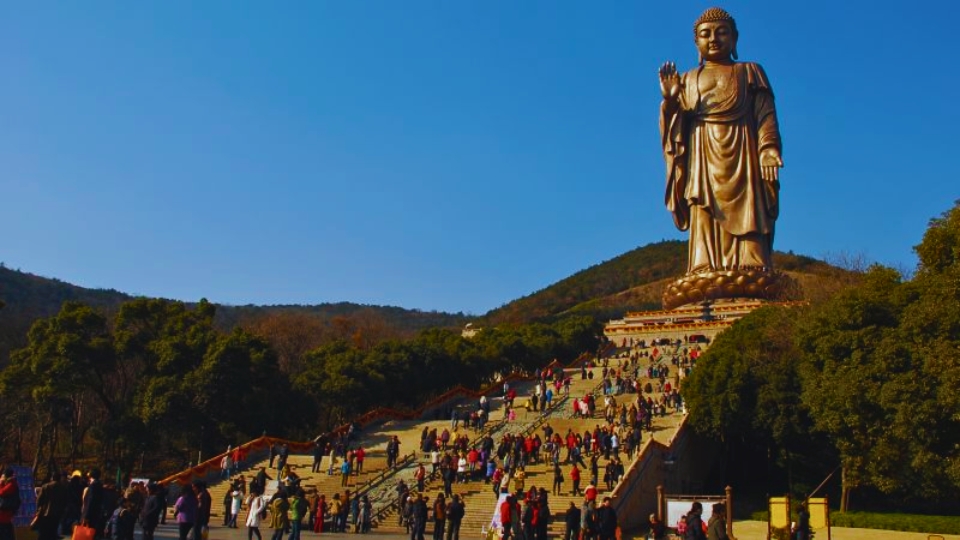
The Spring Temple Buddha has a small reverse swastika carved on its chest. This symbol represents good luck or spirituality and is commonly used in many Asian cultures.
The statue also features Mudra, a term from Sanskrit meaning “sign” or “seal,” which refers to the different hand gestures on Buddha statues. The hand positions on the Spring Temple Buddha each carry special meanings:
- The left palm, open and facing downward, symbolizes kindness.
- The right palm, raised and facing outward, represents teaching or reassurance.
The statue follows a design called Vihara Maitreya, which depicts Buddha Maitreya as a teacher.
Who is the Person in the Spring Temple Buddha?
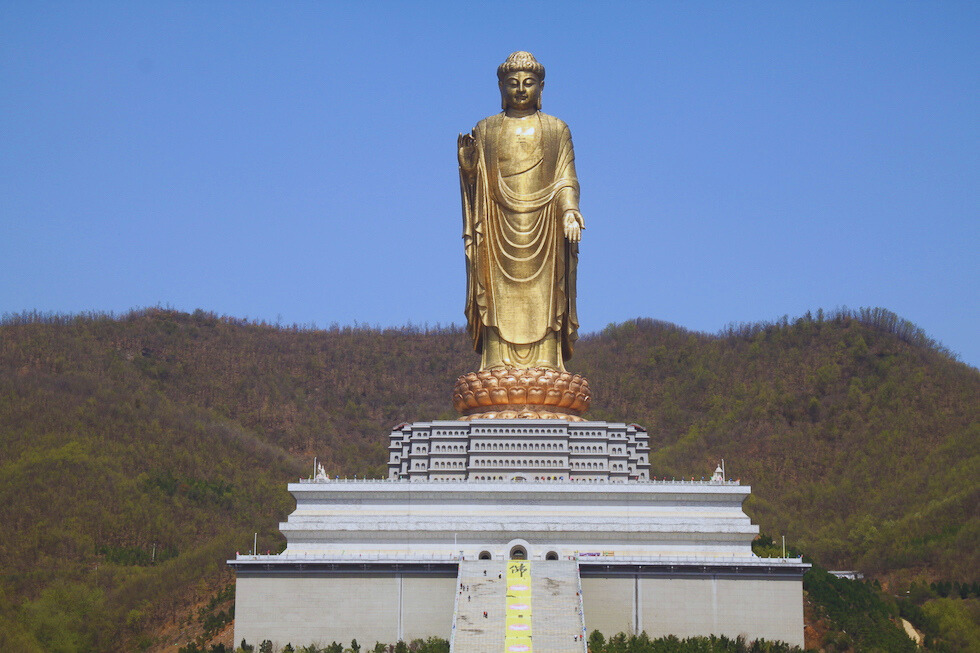
The Spring Temple Buddha is dedicated to Vairocana Buddha. Vairocana, which means “Illuminator” in Sanskrit, is regarded as the highest-ranking Buddha in the Buddhist tradition.
In Japanese, he is known as Dainichi Nyorai or the “Great Sun Buddha.” In Tibetan, he is called Rnam-snang, which means the “Maker of Brilliant Light.” Vairocana is depicted as one of the “self-born” Buddhas, a concept that appears in various forms of art across Nepali, Tibetan, and Javanese cultures.
Interestingly, the name “Spring Temple Buddha” comes from the nearby Tianrui hot spring, which is known for its healing properties.
Mount Yao
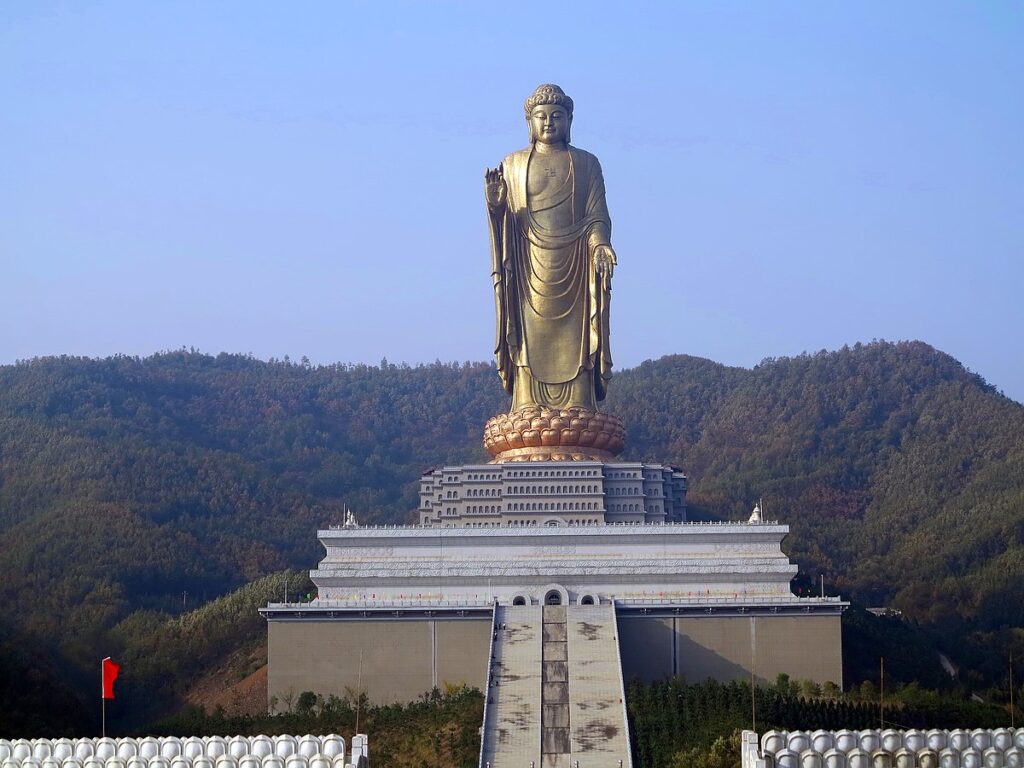
Mount Yao is the breathtaking summit where the Spring Temple Buddha is situated, and it lies within the Funju mountains, known for their incredible natural beauty. In ancient times, it was called Mount Rao before the name evolved to Yao. Historically, Mount Yao holds great significance as the origin of the Liu family name, which later spread across China. The famous ancient thinker Mozi also resided on the mountain. While it was renamed Mount Shiren in the 1950s, the mountain returned to its original name, Mount Yao, in 2008.
Interesting points about Mount Yao:
- The summit is home to the Spring Temple Buddha, one of the tallest statues in the world.
- The mountain is part of the stunning Funju mountain range.
- Historically, it is the origin of the Liu family name, which spread widely across China.
- Ancient thinker Mozi lived here, adding philosophical importance to the site.
- It was renamed Mount Shiren in the 1950s but reverted to Mount Yao in 2008.
Materials and Construction
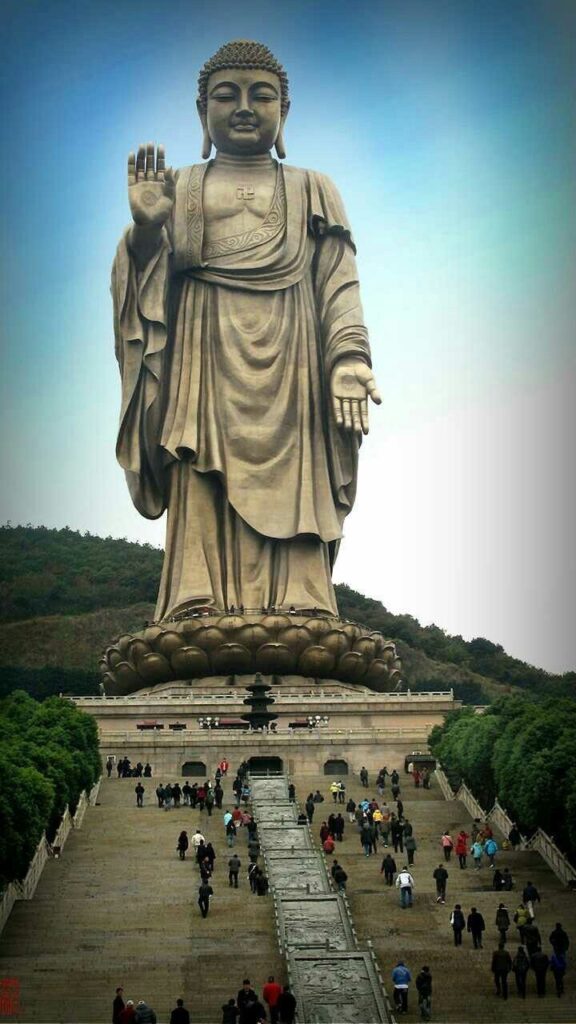
The massive Spring Temple Buddha statue is primarily constructed from steel and copper. A total of 3,300 tons of copper and 238 pounds (108 kg) of gold were used in its creation, along with over 15,000 tons of special steel. The statue itself was built using 13,300 copper slabs and covers an expansive area of 121,600 square feet (11,300 square meters).
Cost and Investment
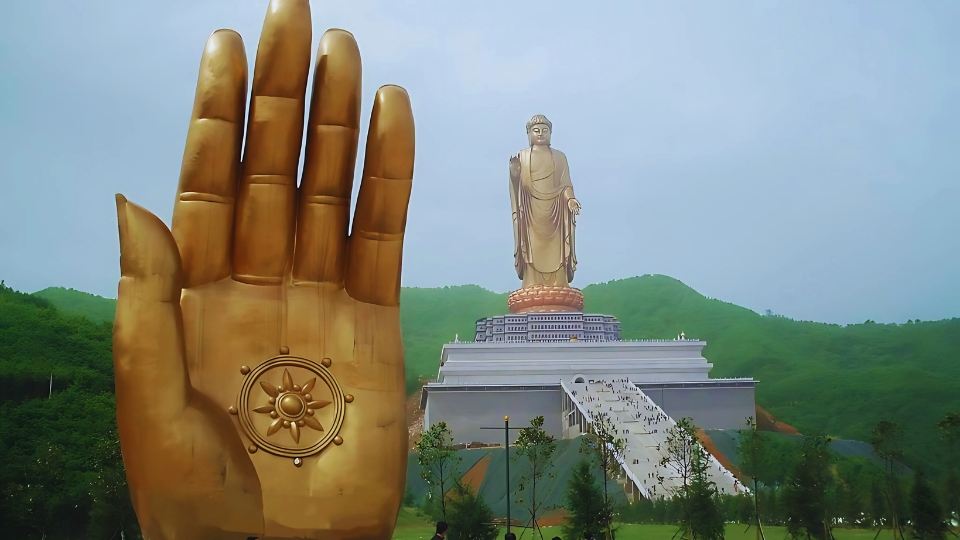
The construction of the Spring Temple Buddha was a significant financial undertaking, originally estimated at around $55 million, with $18 million allocated specifically for the statue itself. The design initially planned for 1,100 copper cast pieces, weighing a total of 1,000 tonnes, showcasing the meticulous craftsmanship and engineering excellence involved.
However, the overall investment grew substantially, reaching approximately 1.2 billion yuan (roughly $140 million USD at the time) to include not just the statue but also extensive landscaping and infrastructure development. This transformation turned the site into a world-class tourist destination, funded through a combination of government and private contributions, underscoring its cultural and spiritual importance.
Location and Surroundings
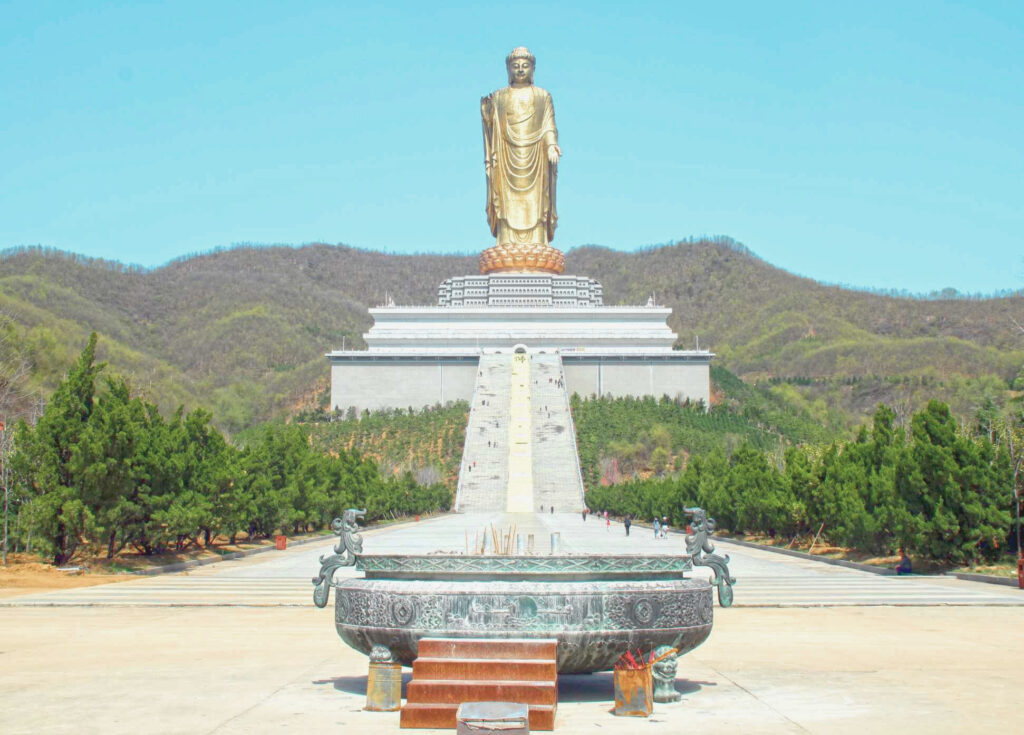
Nestled in Zhaocun Township, Pingdingshan City, Henan Province, the Spring Temple Buddha enjoys a serene setting in the Fodushan Scenic Area. This picturesque region is characterized by rolling hills, lush greenery, and the tranquil flow of rivers. The site is also home to the historic Foquan Temple, which dates back to the Tang dynasty (618–907 AD), enriching the area with historical significance.
Interesting Fact about Spring Temple Buddha
The statue derives its name from the nearby Tianrui hot spring, which produces water at 60°C (140°F) and is renowned for its curative properties. The surrounding area enhances the spiritual ambiance, with the historic Foquan Temple, built during the Tang dynasty, adding to the site’s cultural significance. The temple is also home to the Bell of Good Luck, a massive bronze bell weighing 116 tonnes, perched atop Dragon Head Peak.
Cultural Impact and Tourism
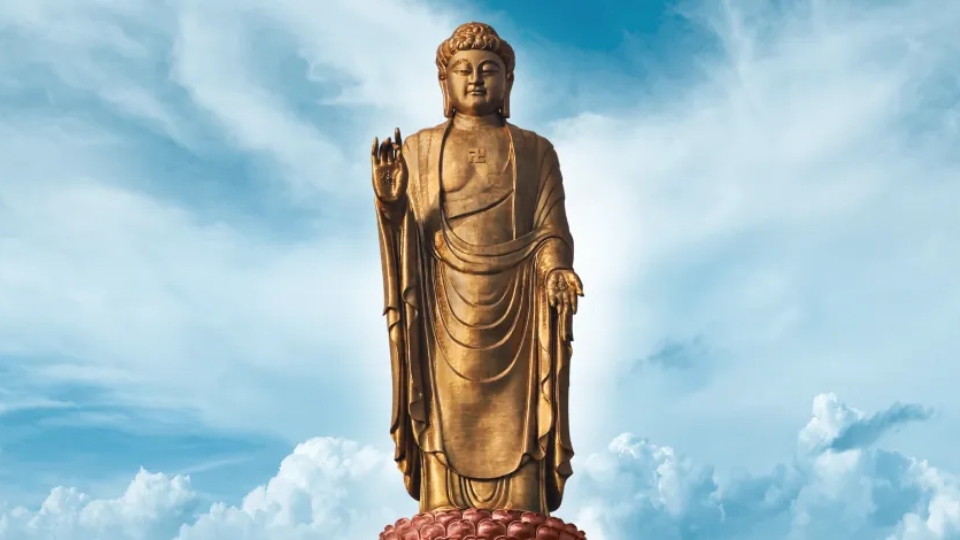
The Spring Temple Buddha is not only a spiritual landmark but also a powerful symbol of Chinese cultural heritage. Recognized as a 5A tourist attraction—the highest rating for Chinese tourist destinations—it attracts millions of visitors annually. Its towering presence and intricate design have made it a must-visit site for both spiritual seekers and architectural enthusiasts.
Comparisons with Other Statues
The Spring Temple Buddha’s record as the tallest statue was surpassed in 2018 by India’s Statue of Unity, which stands at 597 feet (182 meters). However, it still holds the title of the tallest bronze Buddha in the world.
The Grand Buddha at Ling Shan
Before the completion of the Spring Temple Buddha, the Grand Buddha at Ling Shan, standing at 289 feet (88 meters), was the tallest Buddha statue in China. Although smaller in size, it remains an iconic spiritual destination.
Ushiku Daibutsu in Japan
The Ushiku Daibutsu, completed in 1993, was once the tallest Buddha statue in the world at 330 feet (100 meters). Its modern design and peaceful surroundings offer a stark contrast to the grandeur of the Spring Temple Buddha.
Challenges During Construction
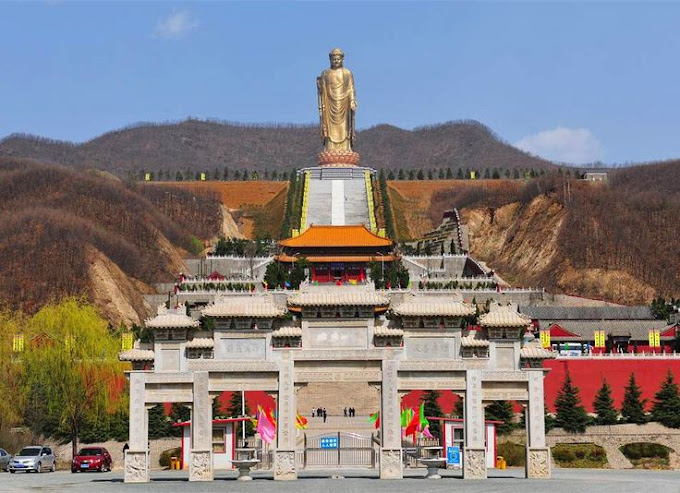
Building a statue of this magnitude came with its share of challenges. Engineers had to account for the hilly terrain and ensure the stability of the foundation. The remote location added logistical difficulties, such as transporting heavy materials and managing construction crews. Despite these obstacles, the project was completed with remarkable precision and durability.
Sustainability and Maintenance
Maintaining a statue of this size requires continuous efforts. Regular inspections and cleaning ensure the monument’s longevity and structural integrity. Additionally, the surrounding environment is carefully managed to preserve the natural beauty of the site and minimize ecological impact.
Modern Relevance of the Spring Temple Buddha
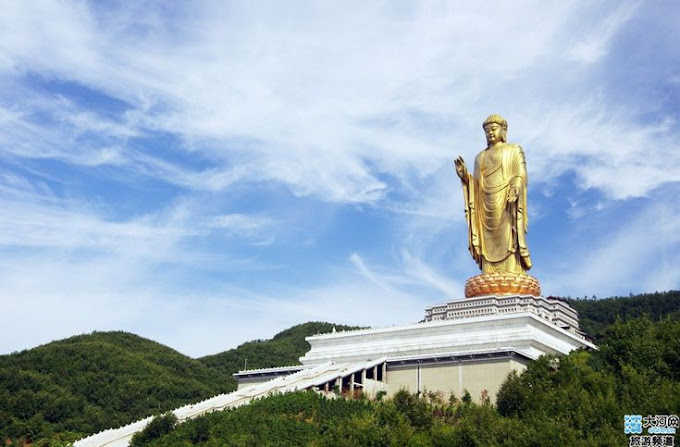
The Spring Temple Buddha continues to serve as a symbol of resilience and cultural pride. It promotes Buddhism on a global scale, inspiring countless visitors with its message of enlightenment and peace. As an architectural wonder, it demonstrates the heights humanity can achieve through faith, collaboration, and dedication.
Quick Facts about the Spring Temple Buddha
- Location: Zhaocun Township, Pingdingshan City, Henan, China.
- Height: 420 feet (128 meters) for the statue; 682 feet (208 meters) including pedestals.
- Completion: 2008.
- Materials Used: Copper, steel, and gold.
- Representation: Vairocana Buddha, symbolizing enlightenment.
Conclusion
The Spring Temple Buddha stands as a towering testament to the enduring power of faith and artistry. From its intricate design to its spiritual significance, this monumental statue has captured the hearts and minds of millions. It serves as a bridge between the past and present, reminding us of the cultural and spiritual treasures that define humanity.